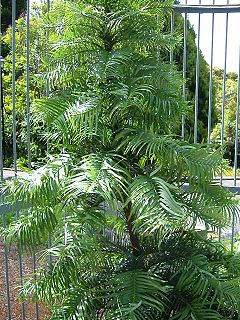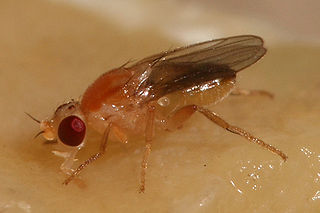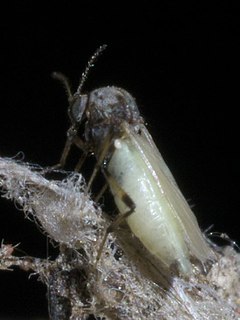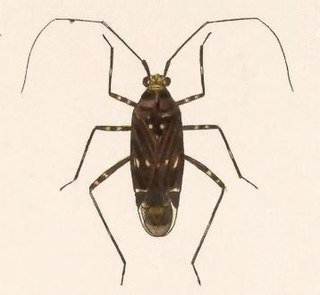
Wollemia is a genus of coniferous tree in the family Araucariaceae. Wollemia was known only through fossil records until the Australian species Wollemia nobilis was discovered in 1994 in a temperate rainforest wilderness area of the Wollemi National Park in New South Wales, in a remote series of narrow, steep-sided sandstone gorges 150 km (93 mi) northwest of Sydney. The genus is named after the National Park.

The Pholcidae are a family of araneomorph spiders. The family contains over 1,800 pholcids, including those commonly known as the marbled cellar spider , daddy long-legs spider, granddaddy long-legs spider, carpenter spider, daddy long-legger, vibrating spider, gyrating spider, long daddy, and skull spider. The family, first described by Carl Ludwig Koch in 1850, is divided into 94 genera.

The bighead carp is a species of freshwater fish, one of several Asian carps. It is one of the most intensively exploited fishes in aquaculture, with an annual worldwide production of over three million tonnes in 2013, principally from China.

Steatoda nobilis is a spider in the genus Steatoda, known in the United Kingdom as the noble false widow and is often referred to as the false widow. As the common name indicates, the spider superficially resembles and is frequently confused for the black widow and other spiders in the genus Latrodectus. S. nobilis has medically significant venom, where in England, it has a reputation as one of the few local spider species that is capable of inflicting a painful bite to humans, with most bites resulting in symptoms similar to a bee or wasp sting.

Banksia nobilis, commonly known as the golden dryandra, great dryandra or kerosene bush, is a shrub of the family Proteaceae which is endemic to Western Australia. It occurs on lateritic rises from Eneabba to Katanning in the state's Southwest Botanic Province. With large pinnatifid leaves with triangular lobes, and a golden or reddish pink inflorescence, it is a popular garden plant. It was known as Dryandra nobilis until 2007, when all Dryandra species were transferred to Banksia by Austin Mast and Kevin Thiele. There are two subspecies, B. nobilis subsp. nobilis and B. nobilis subsp. fragrans.

Deckenia nobilis is a species of flowering plant in the family Arecaceae. It is monotypic within the genus Deckenia, and is endemic to the Seychelles, where it is threatened by habitat loss. It was described in 1870.

Hippelates is a genus of flies in the family Chloropidae and are often referred to as eye gnats or eye flies.
Banksia nobilis subsp. nobilis is a subspecies of Banksia nobilis. As an autonym, it is defined as encompassing the type material of the species. It was known as Dryandra nobilis subsp. nobilis until 2007, when Austin Mast and Kevin Thiele transferred Dryandra into Banksia. As with other members of Banksia ser. Dryandra, it is endemic to the South West Botanical Province of Western Australia.

Pinna nobilis, common name the noble pen shell or fan mussel, is a large species of Mediterranean clam, a marine bivalve mollusc in the family Pinnidae, the pen shells. It reaches up to 120 cm (4 ft) of shell length.

Ptilotus nobilis, commonly known as yellow tails, is an annual or short-lived perennial herb of the family Amaranthaceae. It is found in arid regions of South Australia, southern and eastern Northern Territory, western Queensland and western New South Wales.

Charaxes nobilis, the noble white charaxes, is a butterfly in the family Nymphalidae. The species was first described by Herbert Druce in 1873. It is found in Guinea, Ivory Coast, Ghana, Nigeria, Cameroon, Gabon, the Republic of the Congo, the Central African Republic, the Democratic Republic of the Congo and Uganda. The habitat consists of lowland evergreen forests.

Oscinellinae is a subfamily of frit flies in the family Chloropidae. There are at least 40 genera and 180 described species in Oscinellinae.
Hippelates proboscideus is a species of frit fly in the family Chloropidae.

Bezzia nobilis is a species of biting midges in the family Ceratopogonidae. It is widely considered one of the most common Bezzia species; it is found in Eurasian regions, all over the United States, Central America, and even into South American countries like Brazil. B. nobilis seem to prefer aquatic environments; they are commonly observed in stagnant water pools in Eurasia regions and marshes in the southern United States. Adults of this species are easily distinguished by their black and yellow striped legs. Pupae are recognized by their brown bodies, abdominal spines, and respiratory horns. B. nobilis larvae are distinguished by brown heads and white bodies. Little information is known on their life cycle or mating habits. B. nobilis is a predatory species. While some research suggests they mainly feed on larvae of other insect species, experiments suggest they prefer immobile, easy prey such as dead adult flies, bacteria, and protozoa.
Glabellula is a genus of micro bee flies in the family Mythicomyiidae. There are more than 20 described species in Glabellula.
Hippelates plebejus is a species of frit fly in the family Chloropidae.
Gerstaeckeria nobilis is a species of hidden snout weevil in the beetle family Curculionidae. It is found in North America.

Armases cinereum, known generally as the squareback marsh crab or wharf crab, is a species of true crab in the family Sesarmidae. It is found in the Atlantic Ocean. In 2002, researchers conducted an examination of A. cinereum. The study found that 3.7% of A. cinereum, in the Tampa Bay area, were infected with Leidya bimini.

Cylapus is a genus of plant bugs in the family Miridae. There are about 12 described species in Cylapus.













